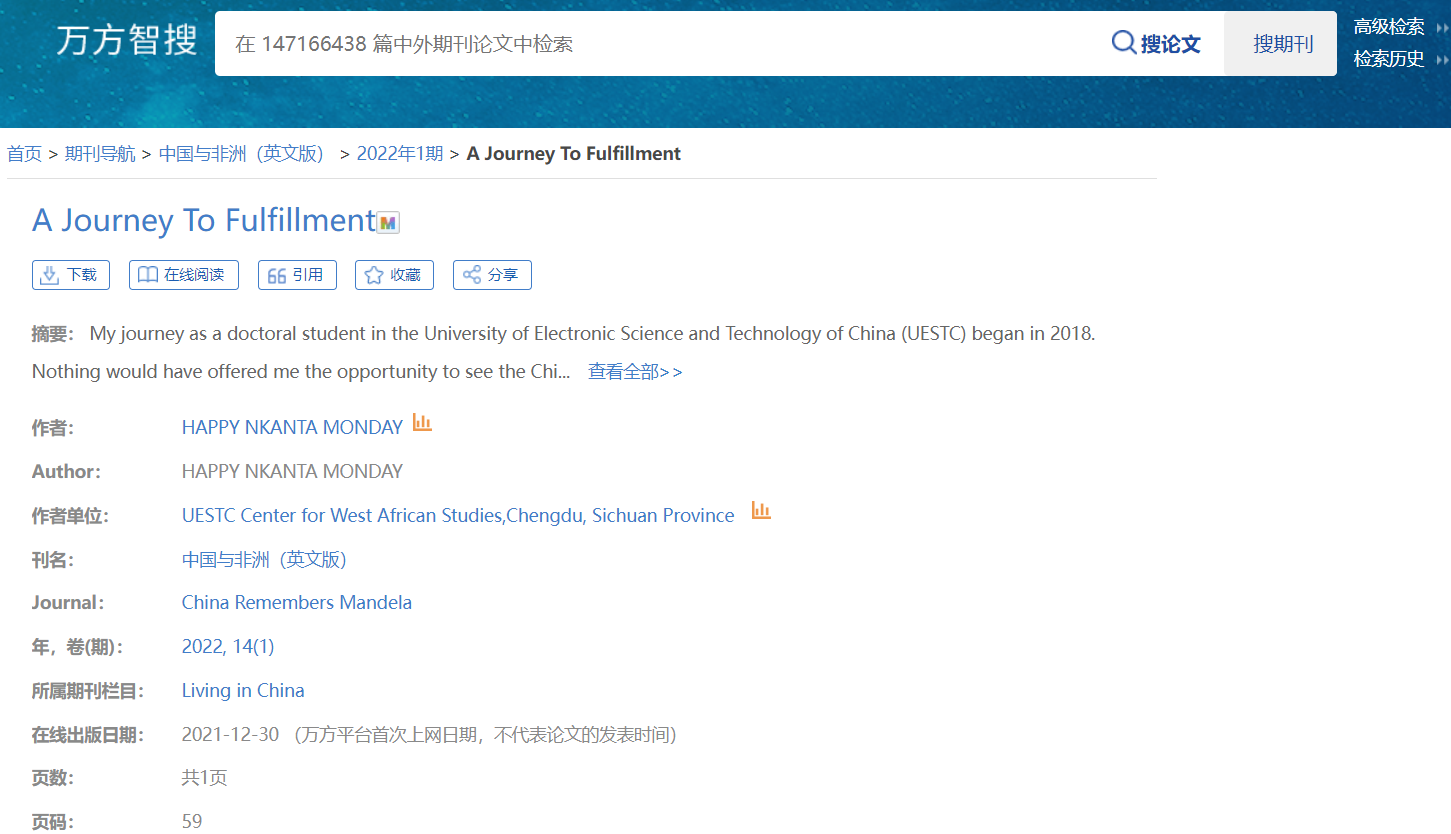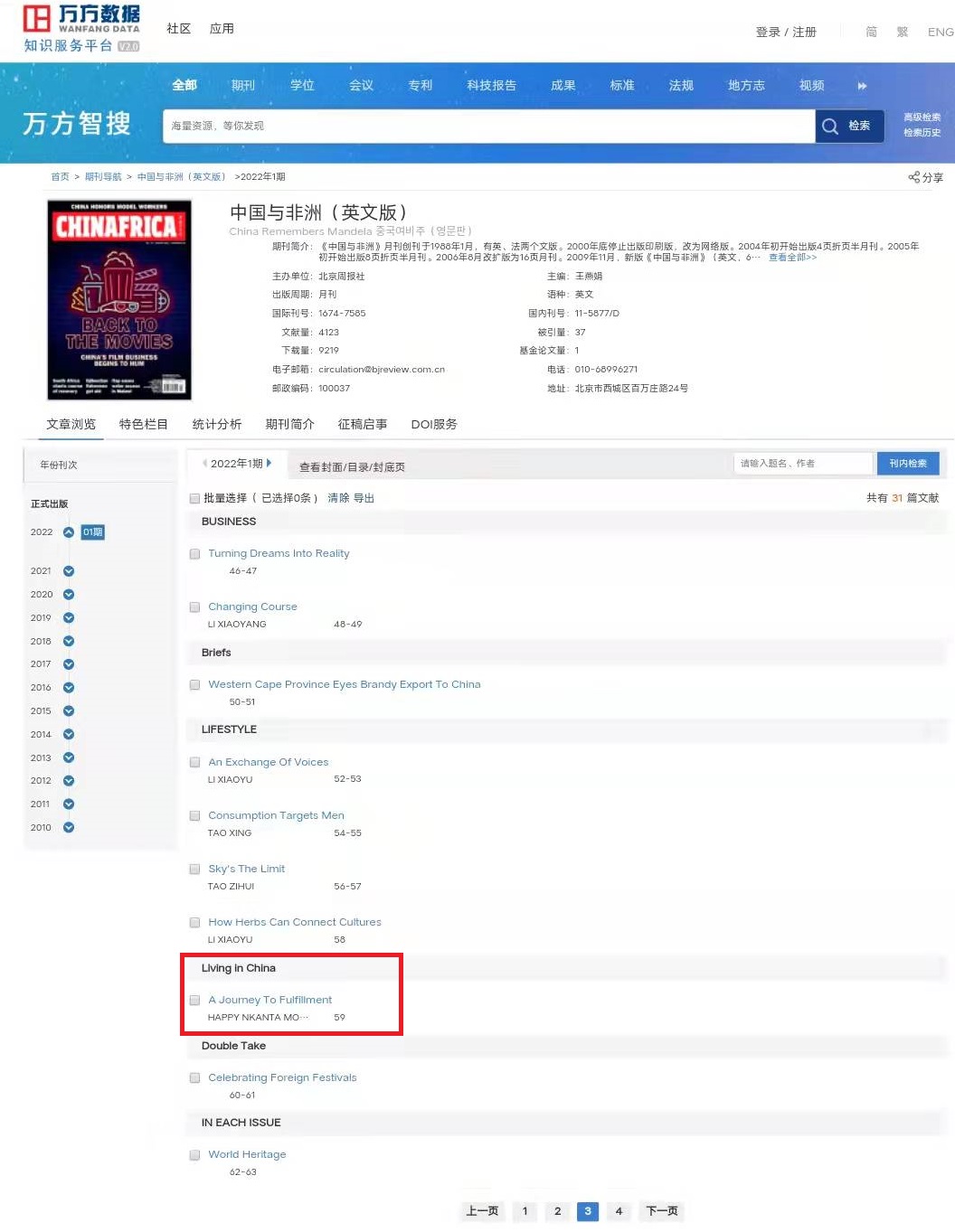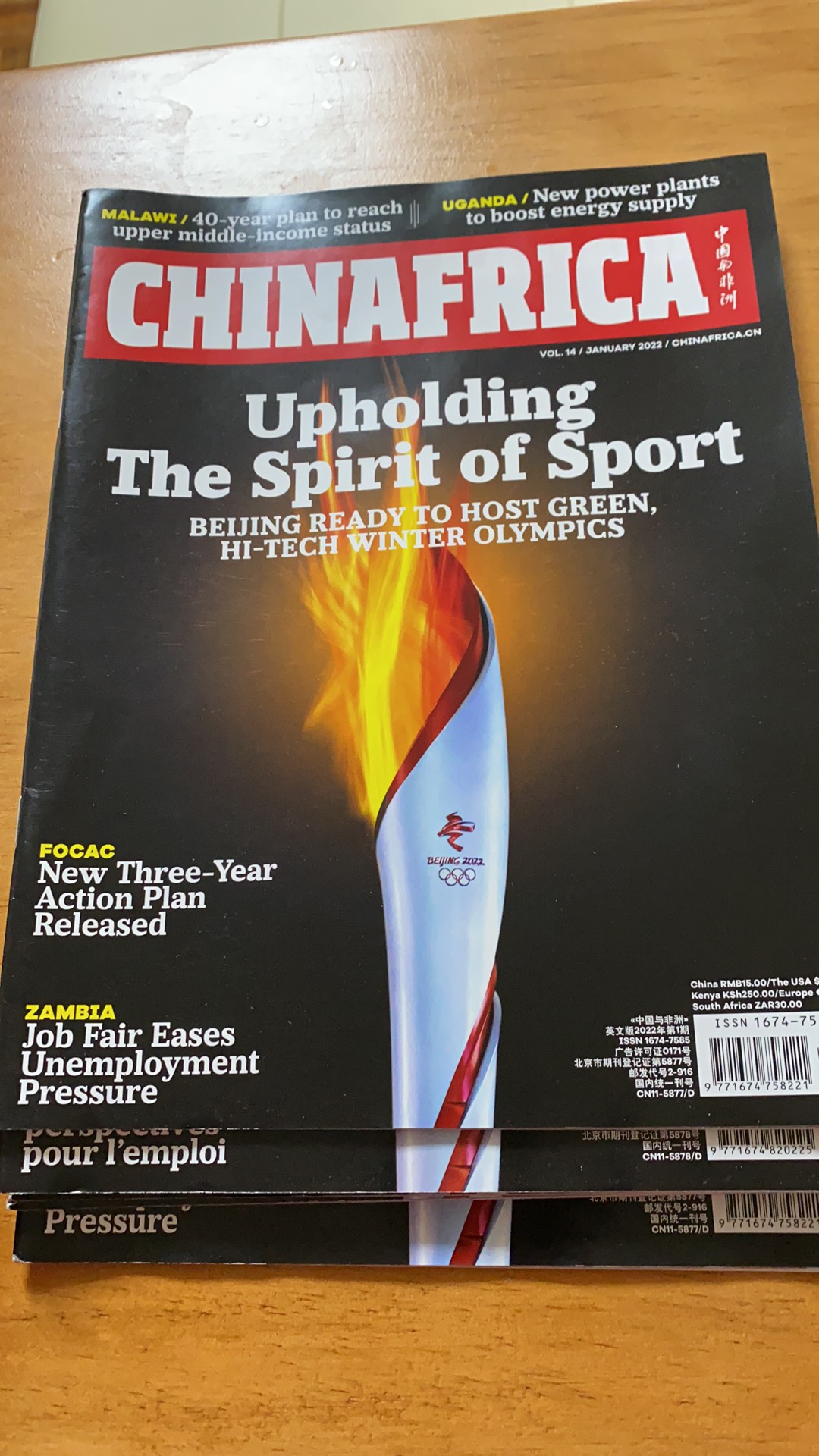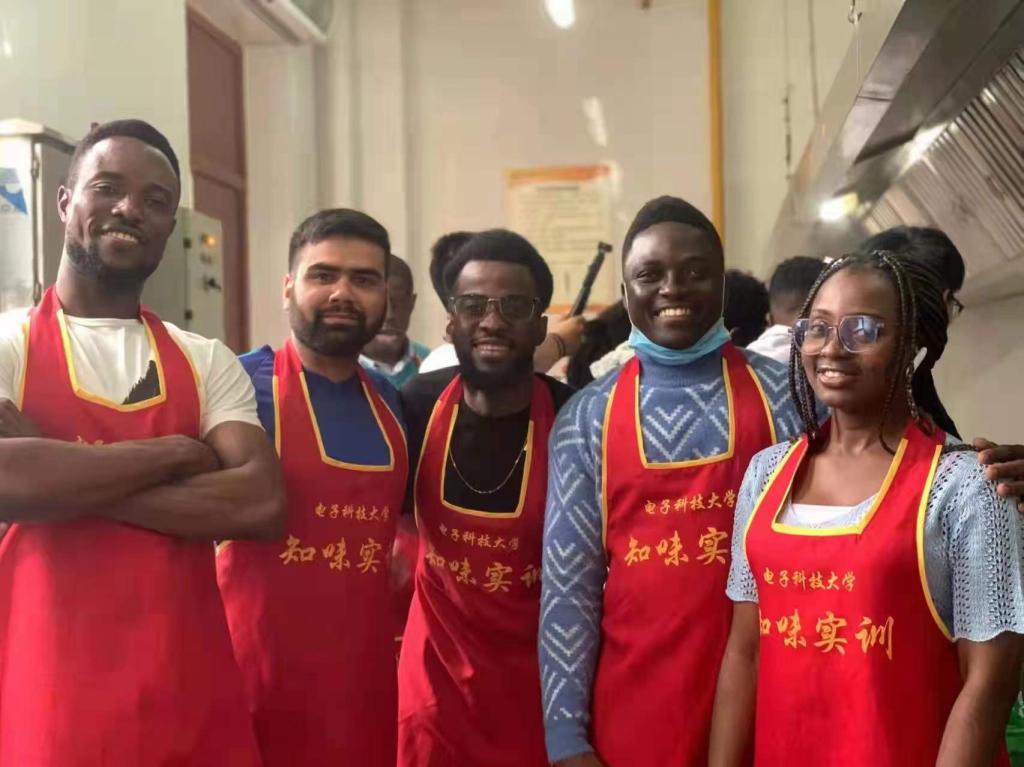2022年1月,我校留学生HAPPY NKANTA MONDAY的文章 “A Journey To Fulfillment” 被《中国与非洲》杂志2022年第一期(总第十四期)收录。
详细链接:https://d.wanfangdata.com.cn/periodical/zgyfz-e202201028




Journey to Fulfillment
My top notch experience in China as an International doctoral student
By Happy Nkanta Monday
My journey as a doctoral student in the University of Electronic Science and Technology of China (UESTC) began in 2018. Nothing would have offered me the opportunity to come in contact with the Chinese cultural diversity other than to study in China. I am constantly fascinated by the different activities happening within the University and the host community at large. The most intriguing experience for me in the year 2021 is the drone swarm display to commemorate the 65th anniversary of UESTC. Talking about my inestimable experience, studying in China has been one, if not the best experience of my life. Despite the fact that I have been studying in China for the past few years, I believe it has impacted my life and widened my perspectives about China as a people with one dream and one vision. My decision to study in China was driven by China’s advancement in technological innovations and more so, China’s amazing effort in preserving her cultural heritage for several decades. ‘Journey to fulfillment’ describes the opportunity China offered me to live my dream as international doctoral student.
Of course, I was both excited and nervous when I first arrived in China. I was a combination of many different feelings because it was my first time traveling so far away on my own and living apart from my family. The kind gesture of my school mates and teachers gave me a bit more peace of mind. It was great hanging out with new Chinese friends and learning to eat Chinese food but the language of communication became a challenge, so it forced me to learn basic Chinese language for survival and as a result, I quickly blended into the system. I was elated to be able to experience Chinese culture and lifestyle as well. As a new student, there are couples of places far from school we need to go especially visiting the hospital and immigration office (PSB) and then seeing that every sign in the subways and names of bus stations are all written in Chinese, I was nervous again.
After a couple of trips around Chengdu, my fears were fully dispelled. The Chinese transportation system impressed me with its precision, punctuality, and ease of use. My experience was the exact saying of Confucius: “I hear and I forget, I see and I remember, I do and I understand.” Now that things had settled, the day of cultural exhibition grew near and so did my excitement. Finally being able to share in the cultural exchange experience was what I had been looking forward to. Later on, the fascinating season of Gingko with pleasant scenery was a breathtaking moment for me with lots of people flooding into the university campus to take photographs with their loved ones. I have never seen people so attached to nature and culture.
Here comes the biggest and the most exciting moment for me, which is the Chinese Spring Festival also known as the Chinese New Year. I had the opportunity to spend the holiday with my Chinese friend and his family. The Chinese Spring Festival is a time for family to gather together and celebrate. The most significant moment is Chinese New Year's Eve. People are supposed to be at home, wherever they are, to celebrate the event with their loved ones. The Chinese New Year's Eve dinner, also known as "reunion dinner," is considered the most vital meal of the year. Large families gather around circular tables to eat the meal and enjoy the moment together. For me, I was an opportunity to integrate myself into the Chinese culture by gaining first-hand experience. During festival season, we were served lucky foods, particularly at the Chinese New Year's Eve family reunion dinner. Fish is a requirement because it means 'surplus' in Chinese and represents abundance. As a symbol of the family unit and prosperity, dumplings shaped like Chinese silver ingots are shared. Glutinous rice cake called Niángāo in Chinese is eaten to represent a greater wealth or position because it has similar sound like “year high.”
As a matter of fact, I find China much safer and easy to settle-down quickly as a foreign student because virtually everything I need for my daily life is just a click of the button. I am totally astonished by China’s technological innovations across all sectors such as commerce, transportation, engineering, housing, health, banking, social networking just to mention a few. With its economic power and dominance, China has the potential to become the next world power. It is worth mentioning that my China experience wouldn’t have been possible without China opening up to the world and this has also in return benefited China in terms of cultural exchange, foreign exports and the spread of the Chinese language being spoken and taught in schools across the globe.
Talking about my research experience, anyone who has been through the arduous process of completing PhD studies understands the value of quality supervision and support. My heartfelt gratitude and admiration to my awesome supervisor for giving me the assistance and advice I require to succeed in the PhD program. He has been an excellent tutor in sketching out my PhD path, providing research advice, providing me with the tools I require, and being available to answer my questions.
Overall, studying in China has strengthened my bond with the country and intrigued my curiosity in its culture. This has had a significant impact on my life, and I hope to have additional opportunity to stay longer and learn more before my eventual departure. I am really grateful to have been given the opportunity to embark on this incredible journey to fulfillment as an international doctoral student in China.

The Center for West African Studies of University of Electronic Science and Technology of China (CWAS of UESTC)